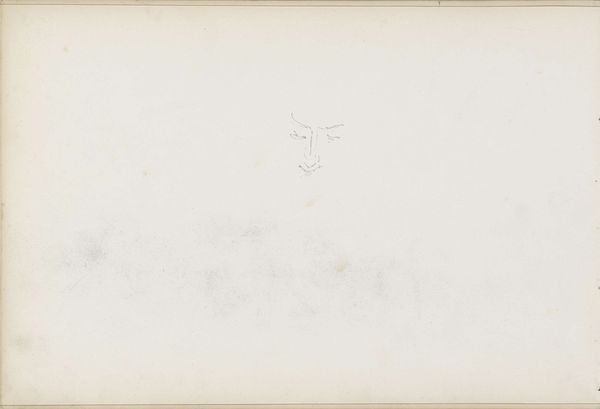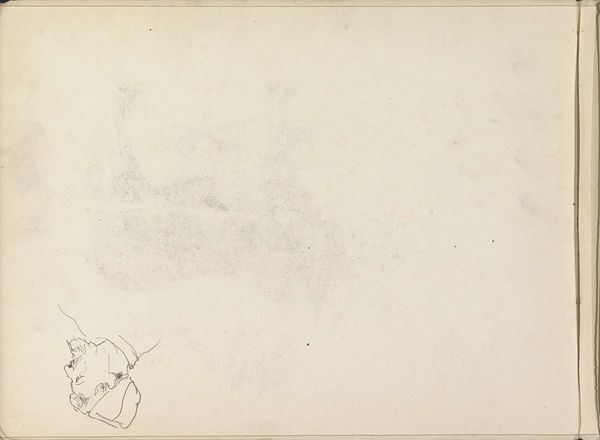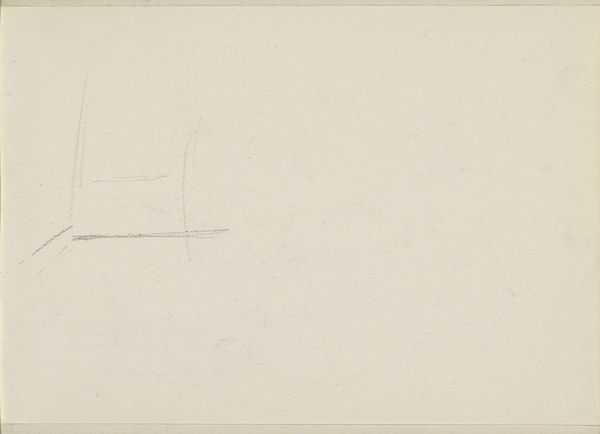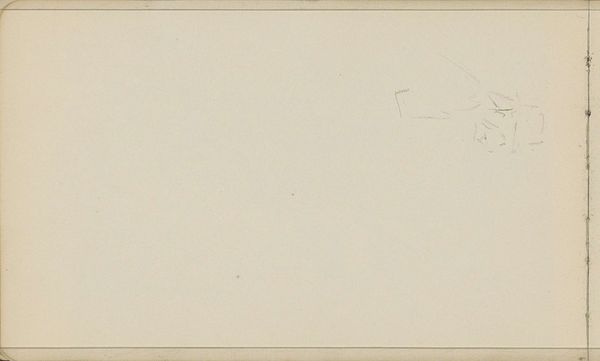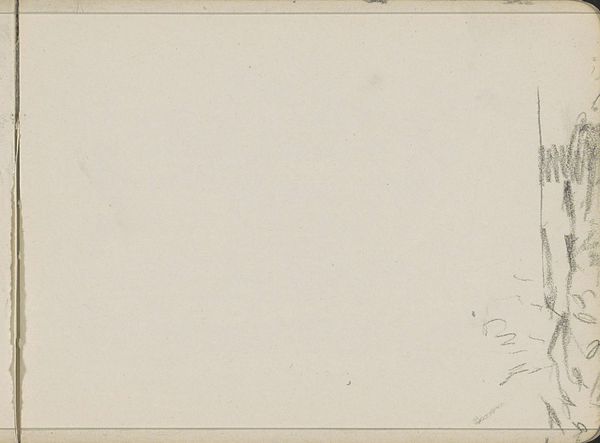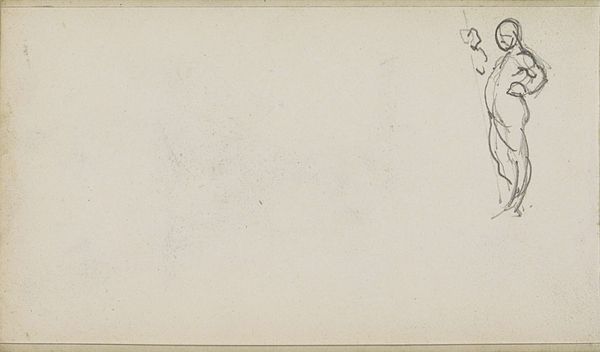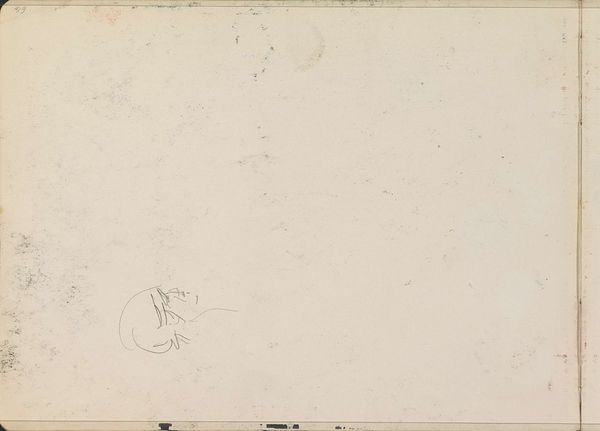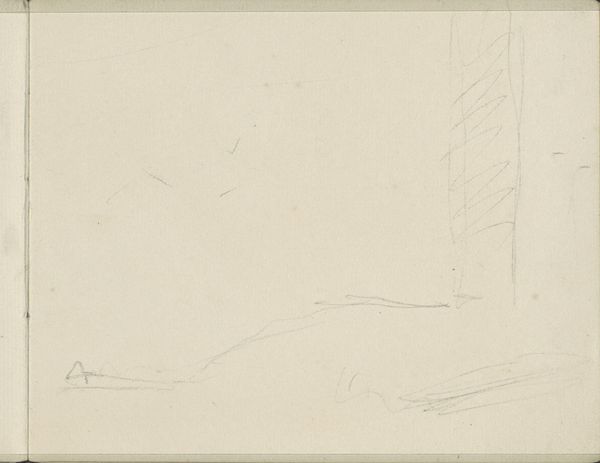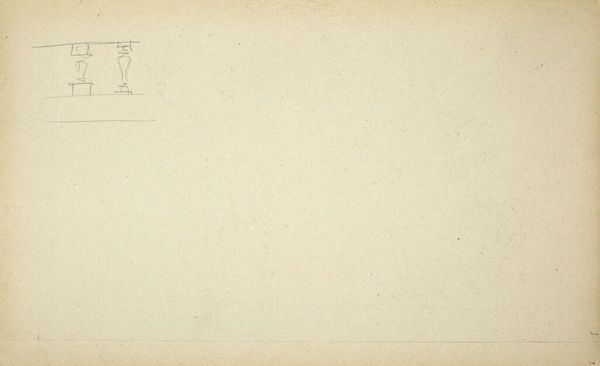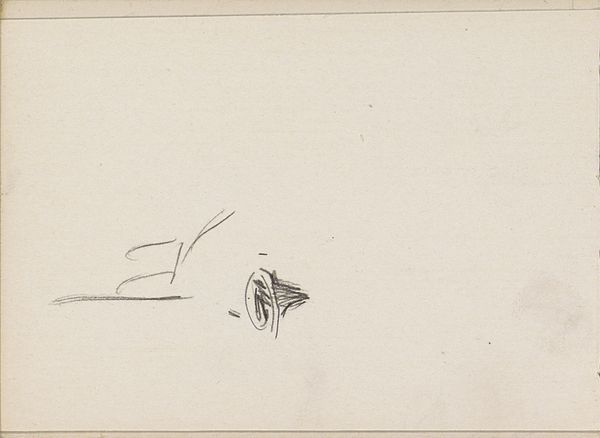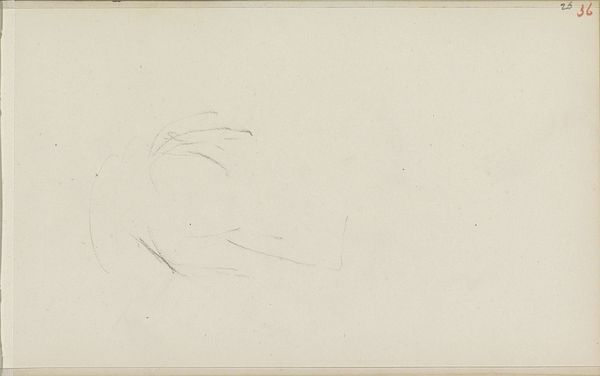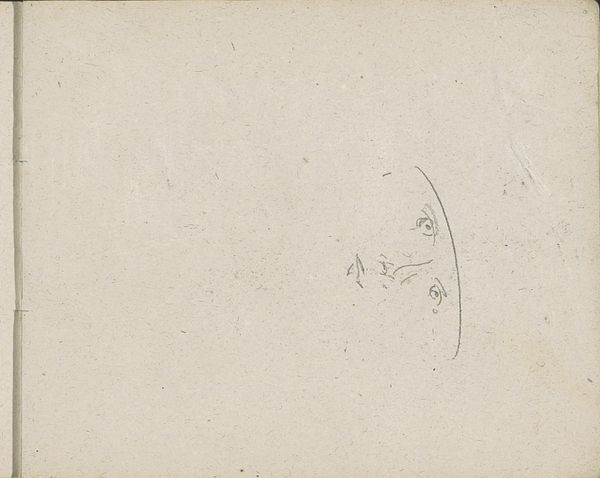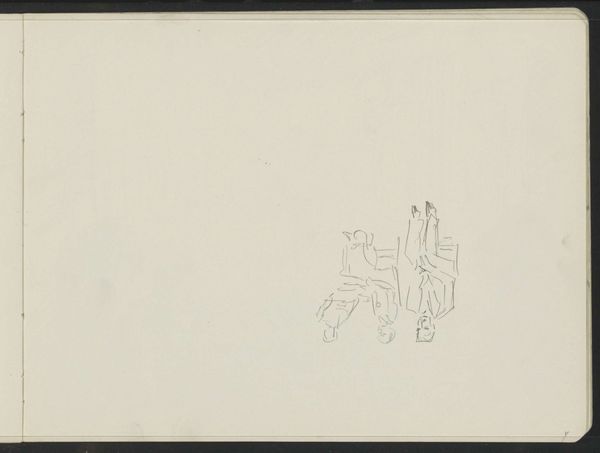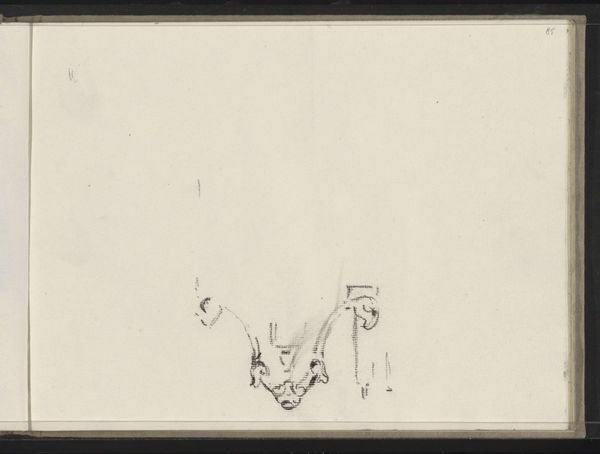
drawing, paper, pencil
#
drawing
#
paper
#
form
#
geometric
#
pencil
#
line
#
cityscape
#
modernism
Copyright: Rijks Museum: Open Domain
Curator: Here we have "Studieblad, mogelijk met gebouwen," or "Study Sheet, possibly with buildings," created by Johan Antonie de Jonge in 1909. It’s a pencil drawing on paper. Editor: Sparse, isn't it? It looks like a memory fading. These ghost-like architectural suggestions... Makes you wonder what he left out. It feels more like a suggestion of a cityscape than an actual depiction. Curator: It’s fascinating to consider it in light of early modernism. You see de Jonge engaging with simplification and abstraction. Note the use of pure line and the almost geometric forms that suggest buildings. This was a period of immense societal change, reflecting new attitudes toward urban development. Editor: I feel like I'm looking at a blueprint of a feeling more than a building! So clinical and minimal. Was he sketching an idea of the future maybe? All cold angles and sheer surfaces... kind of unsettling, in a beautiful way. Curator: That’s insightful! These studies often served as preparatory works. The social context is crucial to understanding what a Modernist artist like de Jonge aimed to communicate with simplified urban images. It challenged the traditions of academic landscape art, which depicted grand architectural designs of European power. De Jonge’s images seem more vulnerable. Editor: Yes! Vulnerable is perfect! Like the city’s shedding a skin... or waiting to grow one. But who dictates its form, then? Are these just lines or boundaries being laid down, dictating who is included and excluded? Sorry. Got a bit dark there. Curator: No, not at all. I appreciate the interpretation, reflecting the evolving social landscapes and how early Modernism became a visual and critical instrument. De Jonge here offers space for introspection through simple strokes, opening up discussions about architectural legacies, or potentially… erasures. Editor: Beautifully put. Makes me wonder about what buildings were erased to put those lines in the first place. Curator: Well, thank you. It seems that with only a few lines, an archive can begin to breathe…
Comments
No comments
Be the first to comment and join the conversation on the ultimate creative platform.
